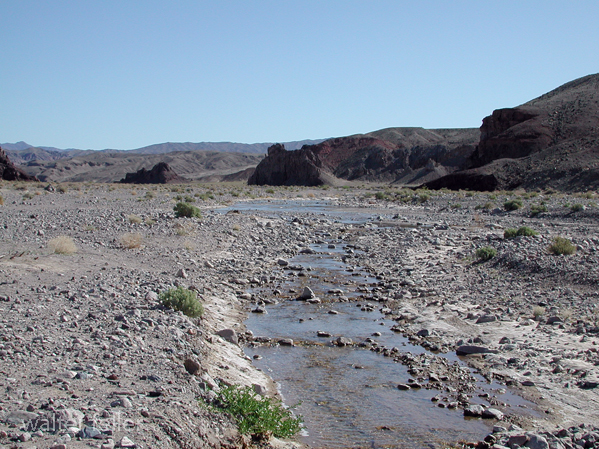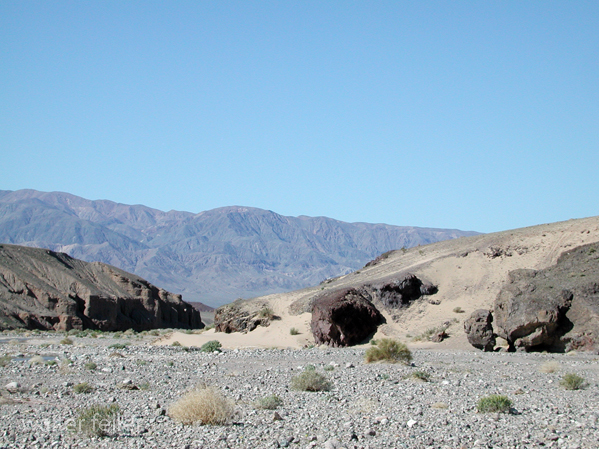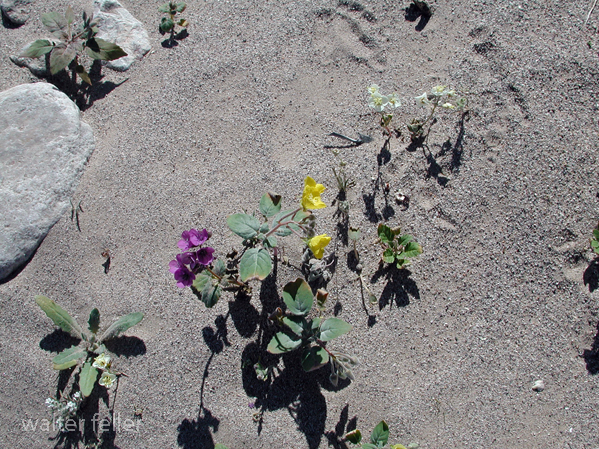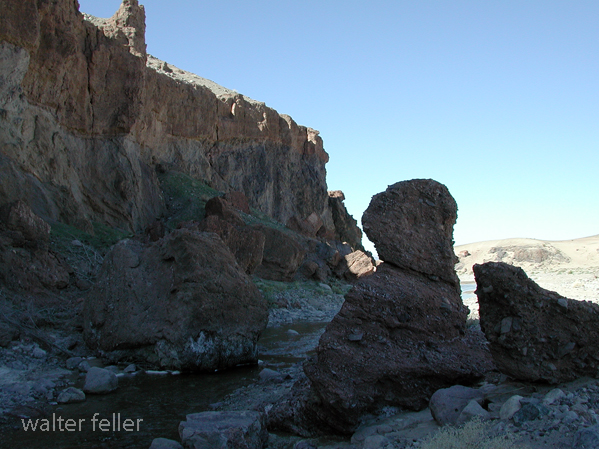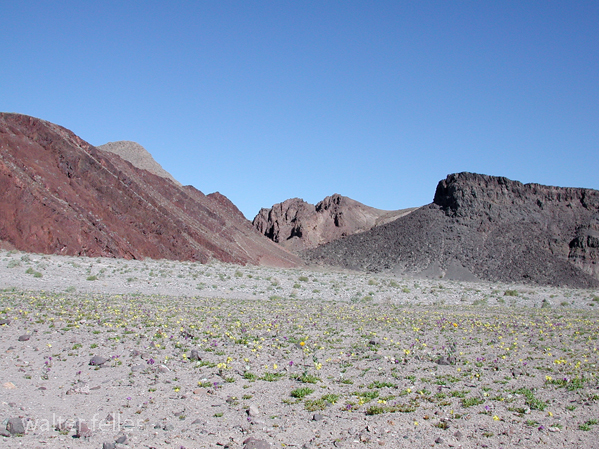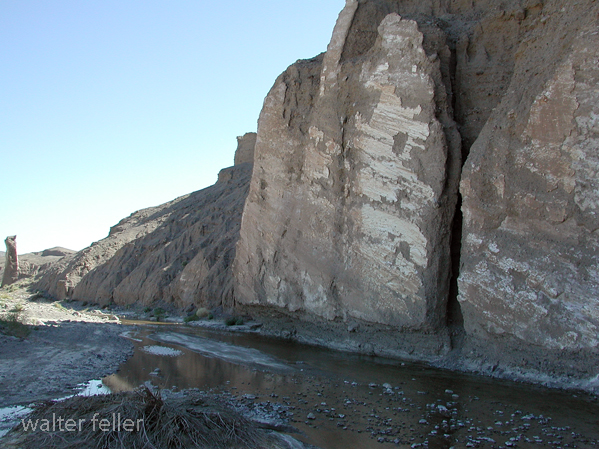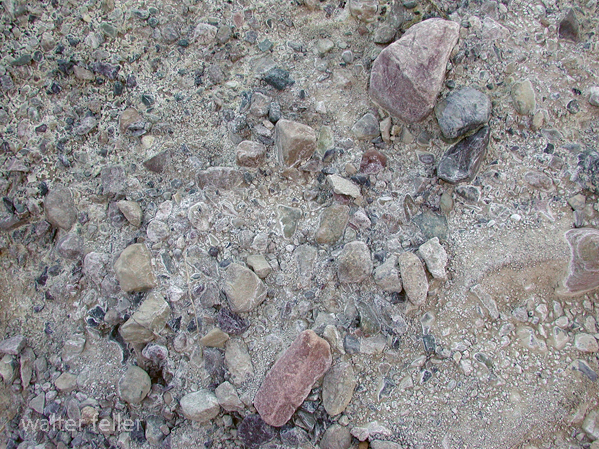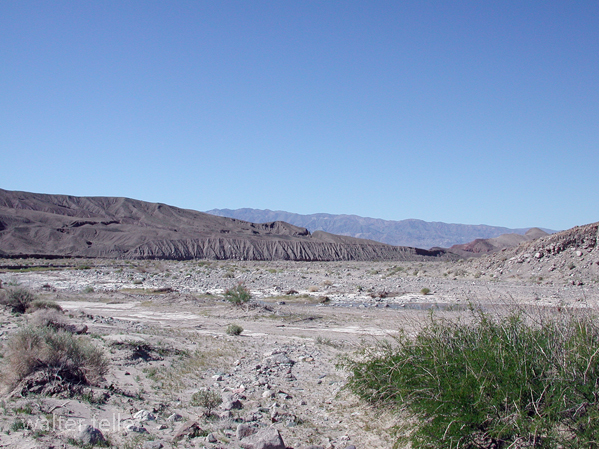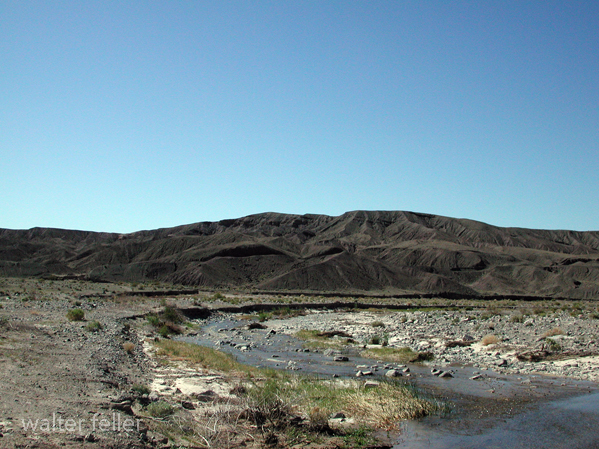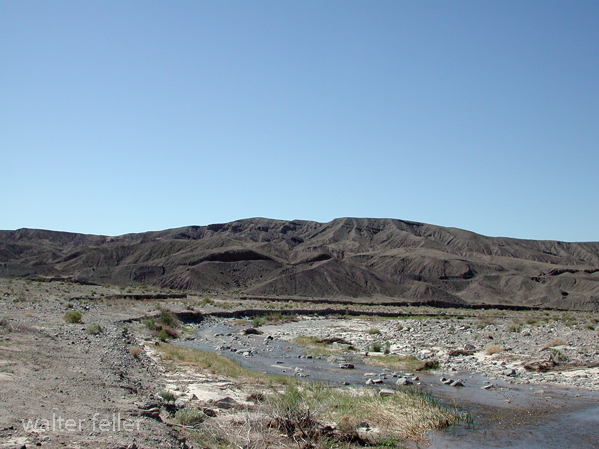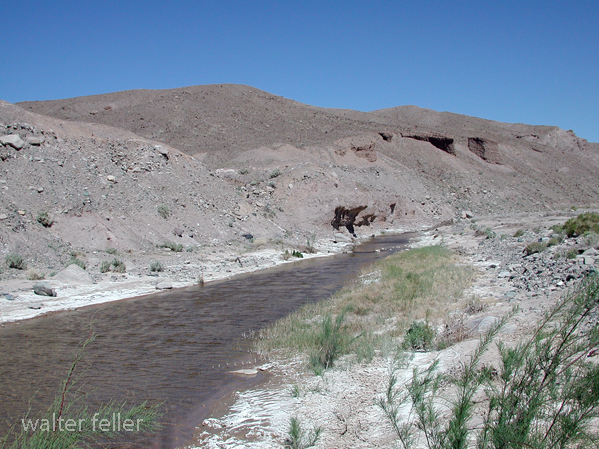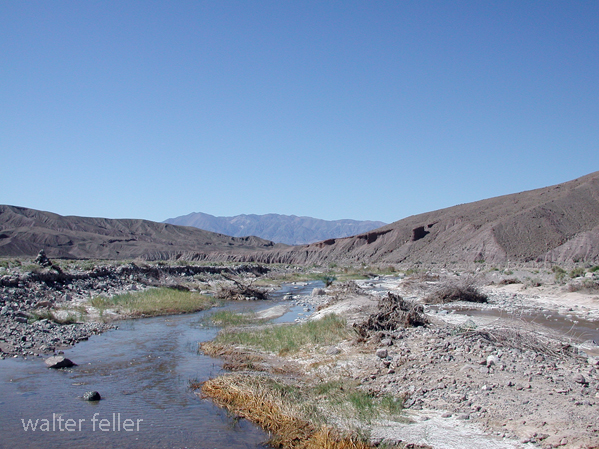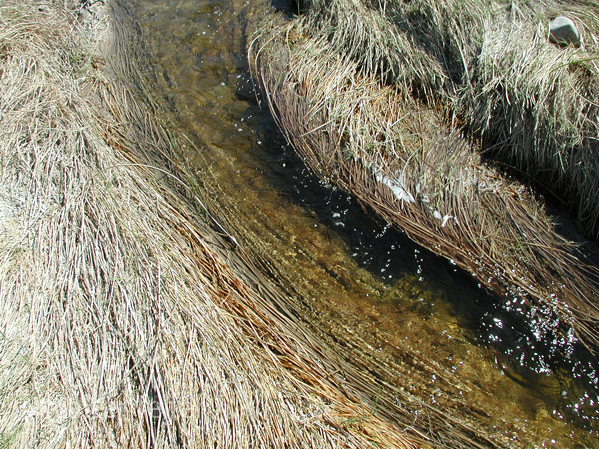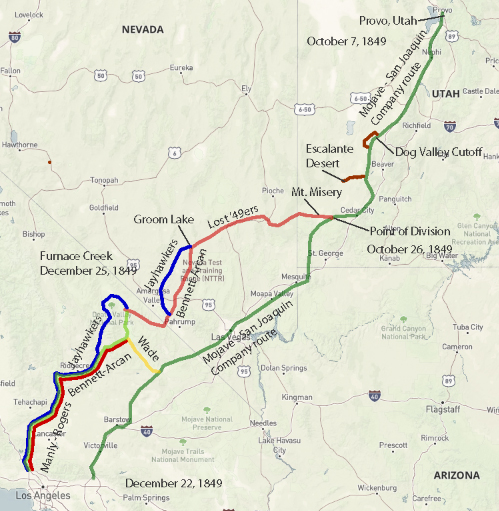Tag: Death Valley
How Death Valley Got Its Name — S1E1
Gold – Silver in Them Thar’ Hills!
A lost party, the Bennett, Arcane, and Wade families had taken a different route trying to traverse the mountain ranges. The Wade family, traveling behind the others, were the only ones to find their way out of (today’s) Death Valley with their wagons intact. The Bennett and Arcane families felt they could not continue after suffering terrible hardships. Two members left on foot and returned with food and supplies to rescue the others. Actually, only one party member died from starvation and lack of water and was buried there. Legend has it that as the party crested over the rim on their way out of that forbidden valley, Juliet Brier, a woman noted the following in her diary, “Goodbye Death Valley.” (NOTE: From Irving Stones book, “Men to Match My Mountains”
Gold – Silver in Them Thar’ Hills!
https://mojavedesert.net/military/fort-irwin-07.html
The naming of Death Valley, located in Eastern California, is a topic of interest and speculation. This vast desert valley, known for its extreme heat and arid conditions, has a name that evokes a sense of foreboding and danger.
Contrary to popular belief, the name “Death Valley” was not given due to the number of deaths occurring within its borders. In fact, the valley’s name can be traced back to a group of pioneers who experienced a challenging journey through this unforgiving landscape in the mid-19th century.
In 1849, a group of gold prospectors, known as the “Lost 49ers,” ventured into what is now Death Valley in search of riches. However, their journey quickly turned into a struggle for survival. Many groups perished along the way when facing scorching temperatures, lack of water, and hostile terrain.
The survivors of this ill-fated expedition gave the valley its name. As they emerged from the treacherous landscape, they reportedly looked back and proclaimed, “Goodbye, Death Valley!” This proclamation, filled with relief and gratitude for having survived the ordeal, stuck, and the name Death Valley became etched in history.
Over time, the name Death Valley symbolizes this unique geographical feature’s harsh and inhospitable nature. The valley’s extreme temperatures, with summer highs regularly exceeding 120 degrees Fahrenheit, make it one of the hottest places on Earth. Its arid conditions and sparse vegetation add to its desolate and foreboding reputation.
Despite its ominous name, Death Valley is not entirely devoid of life. Various species of plants and animals have adapted to the harsh conditions, carving out a fragile existence amidst the barren landscape. The valley also boasts stunning geological formations, such as the towering Mesquite Flat Sand Dunes and the iconic Badwater Basin, the lowest point in North America.
Death Valley National Park’s unique beauty and extreme environment attract visitors worldwide. The park offers opportunities for hiking, camping, and exploring the arid expanses. However, caution is always advised due to the valley’s harsh conditions and proper preparation.
In conclusion, the naming of Death Valley is rooted in the experiences of the pioneers who first traversed its challenging terrain. While the name may evoke a sense of danger and foreboding, it serves as a testament to the resilience of the human spirit and the ability to adapt to even the harshest environments.
Death Valley Brochures
Featuring Amargosa Hotel, Death Valley Junction & Furnace Creek Inn, Death Valley – 1931

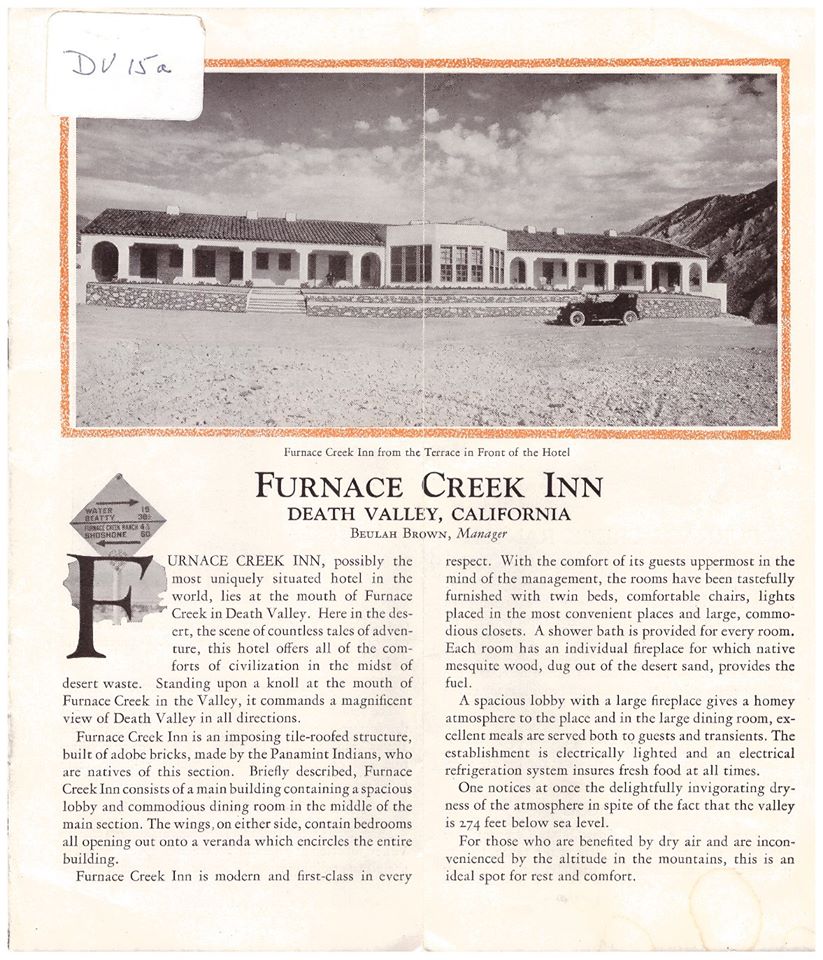

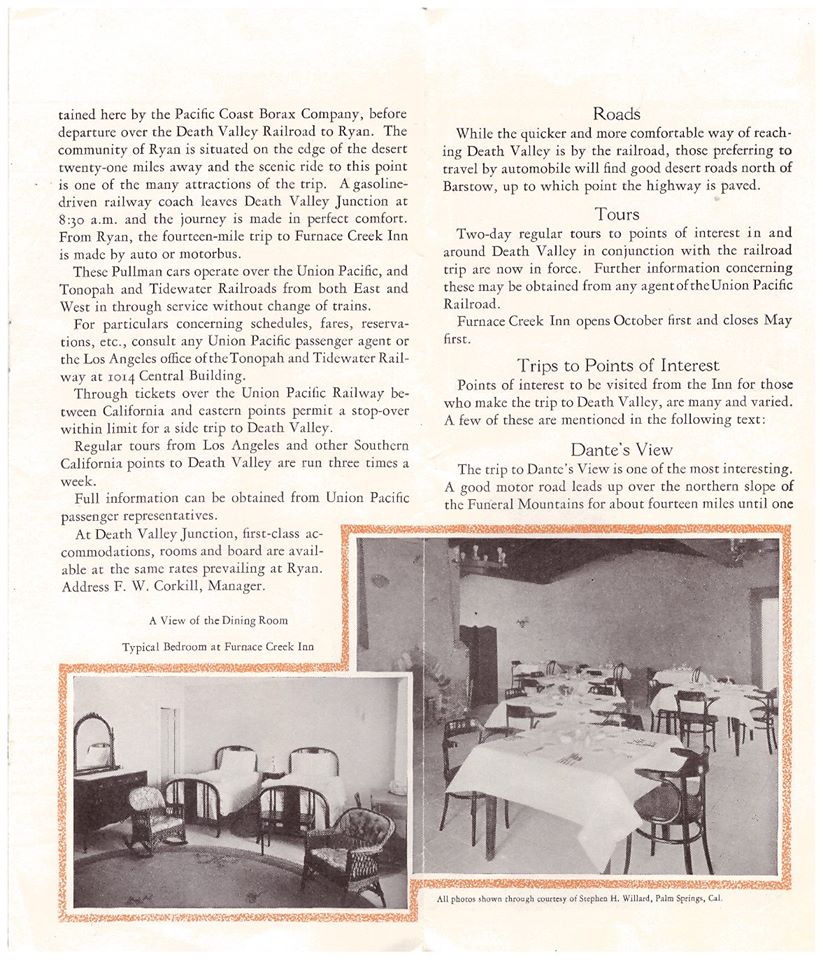

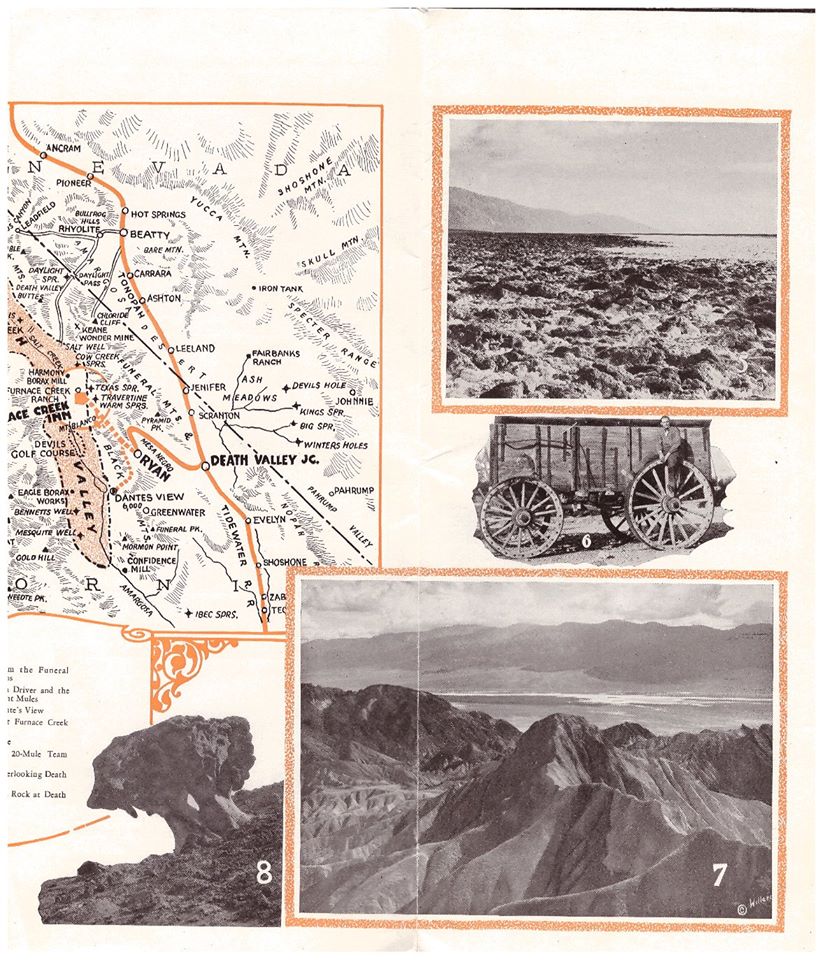
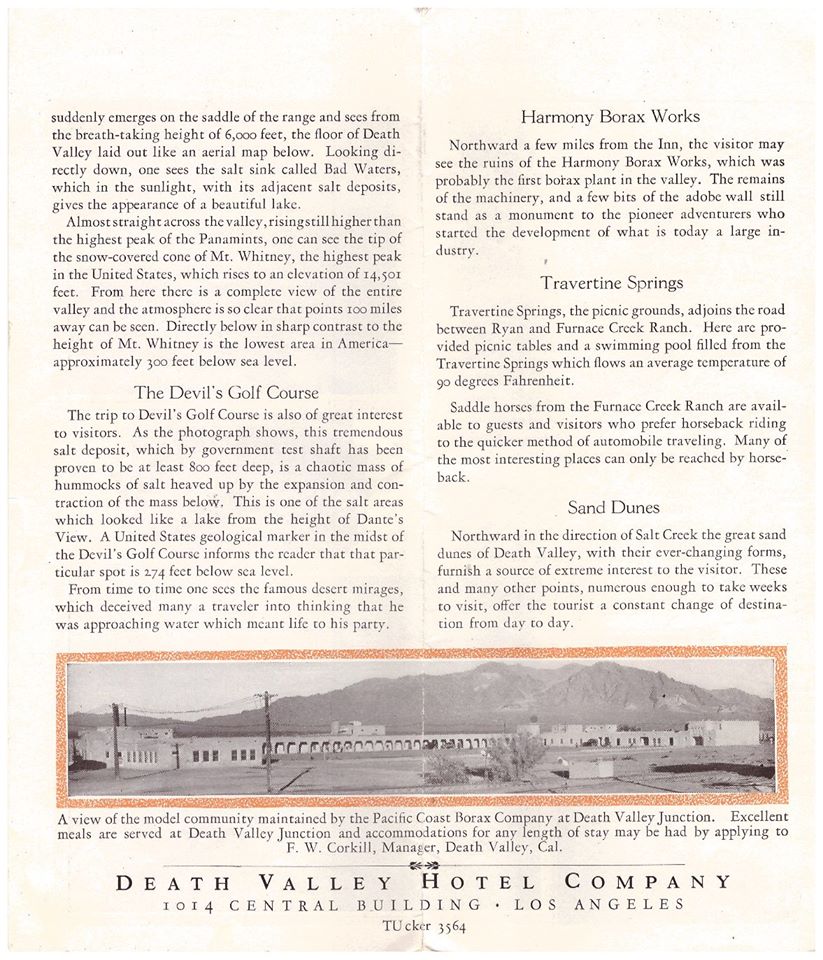

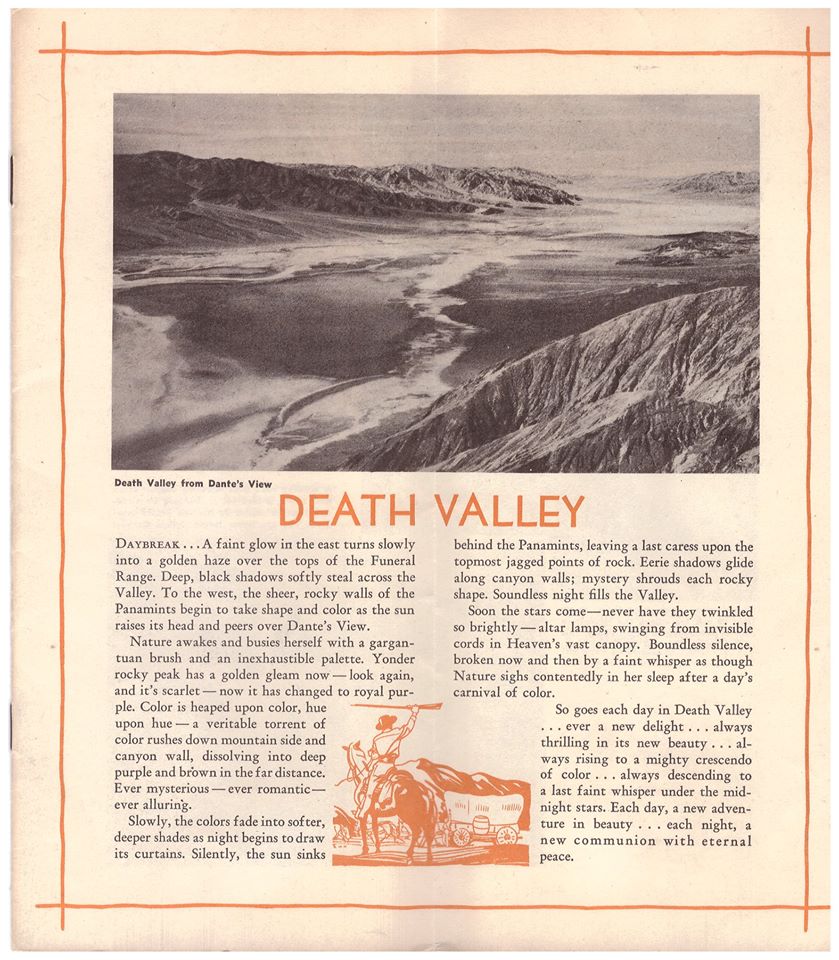

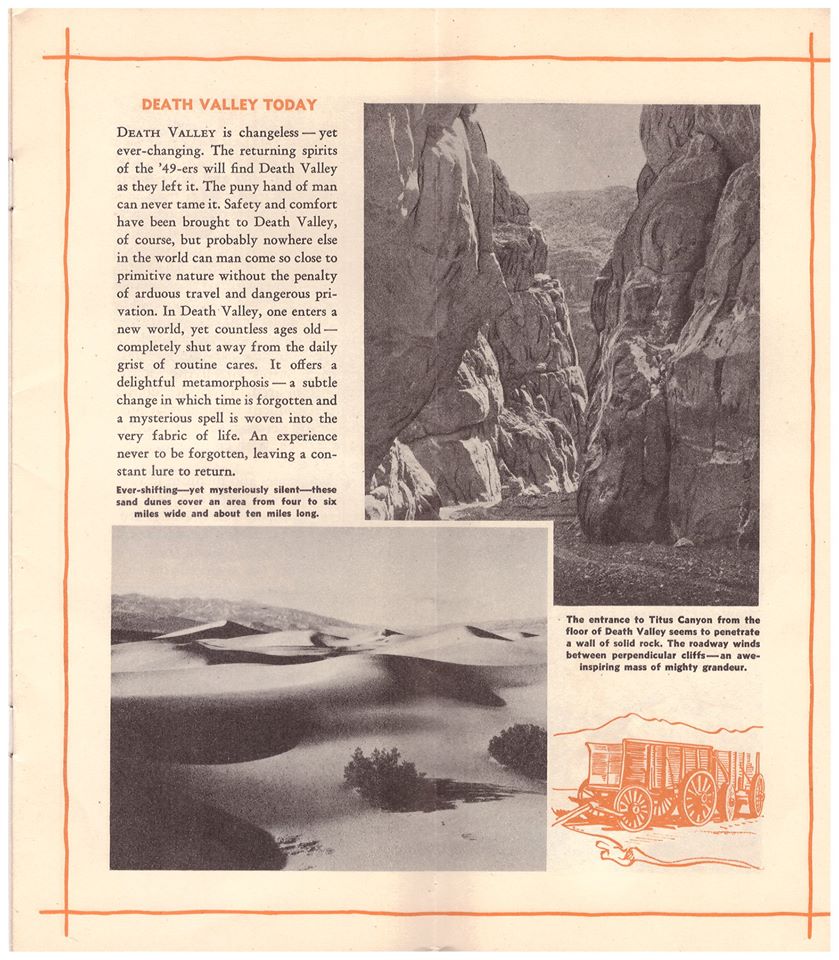
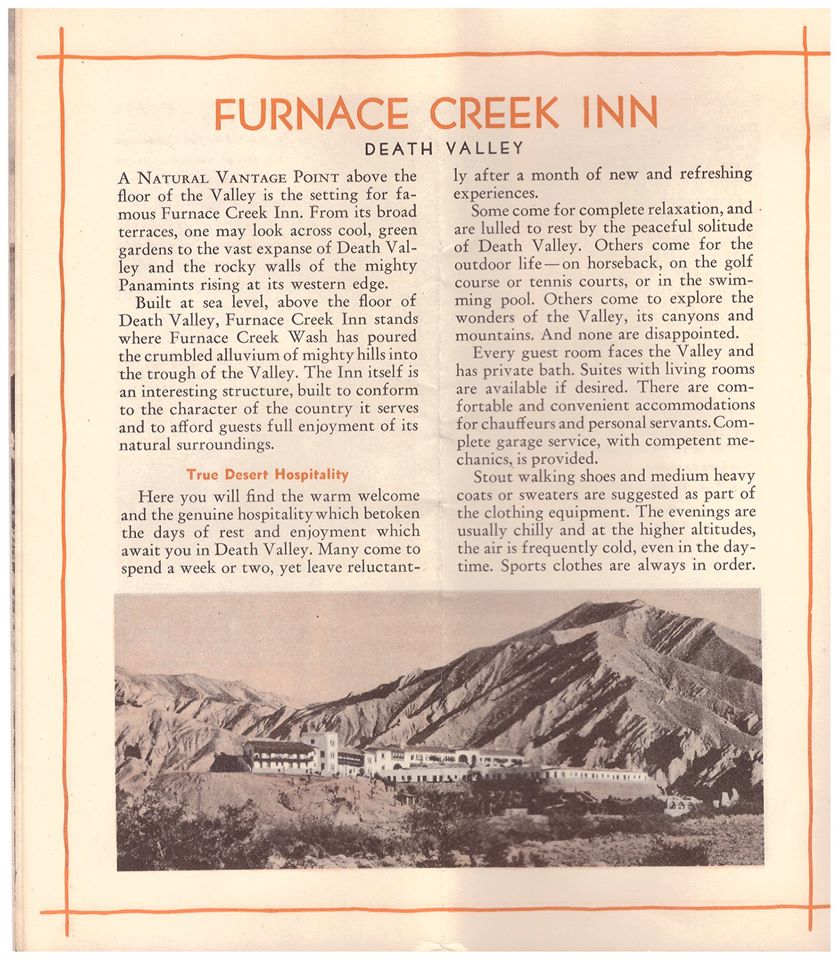
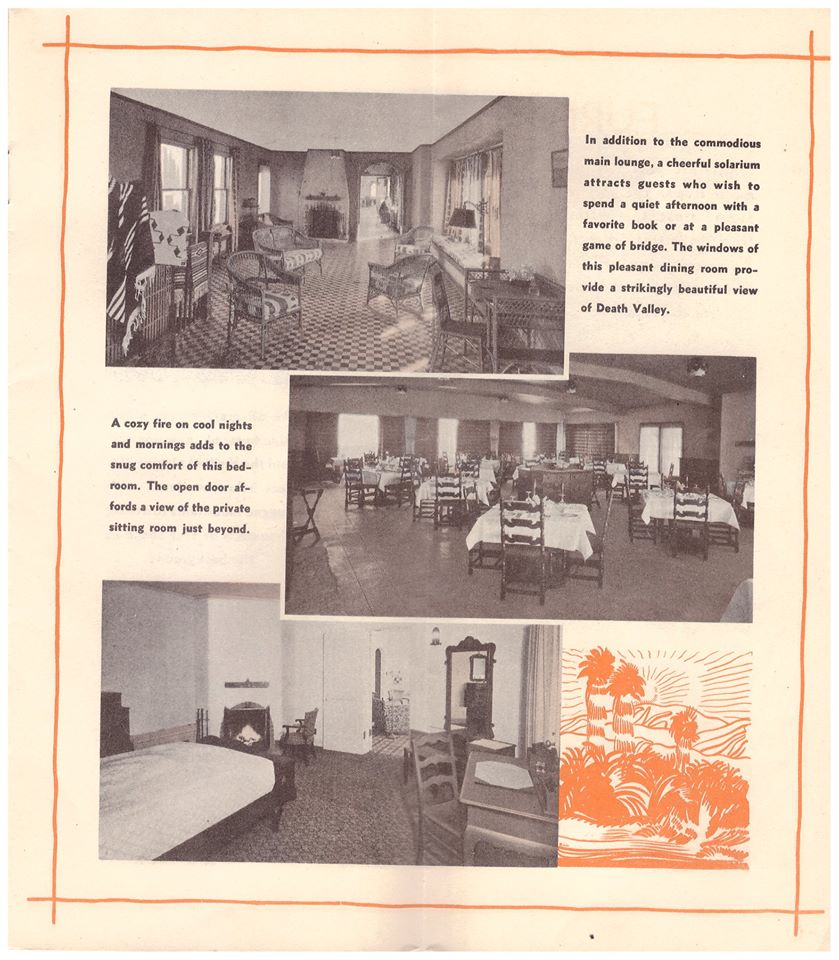
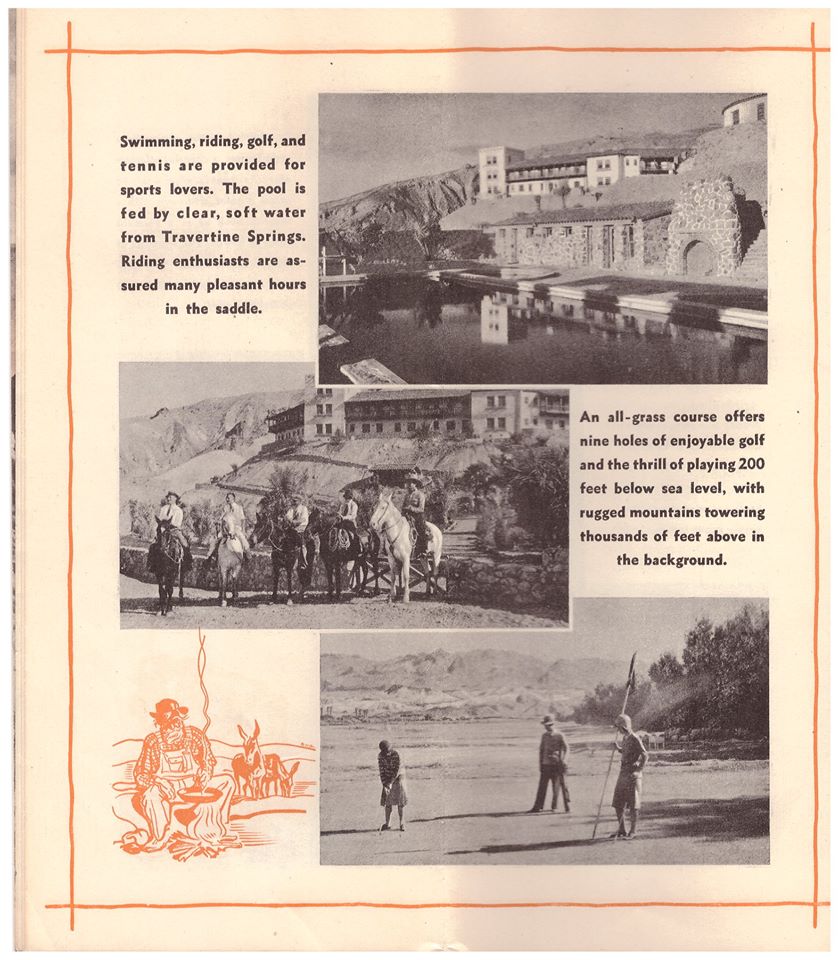
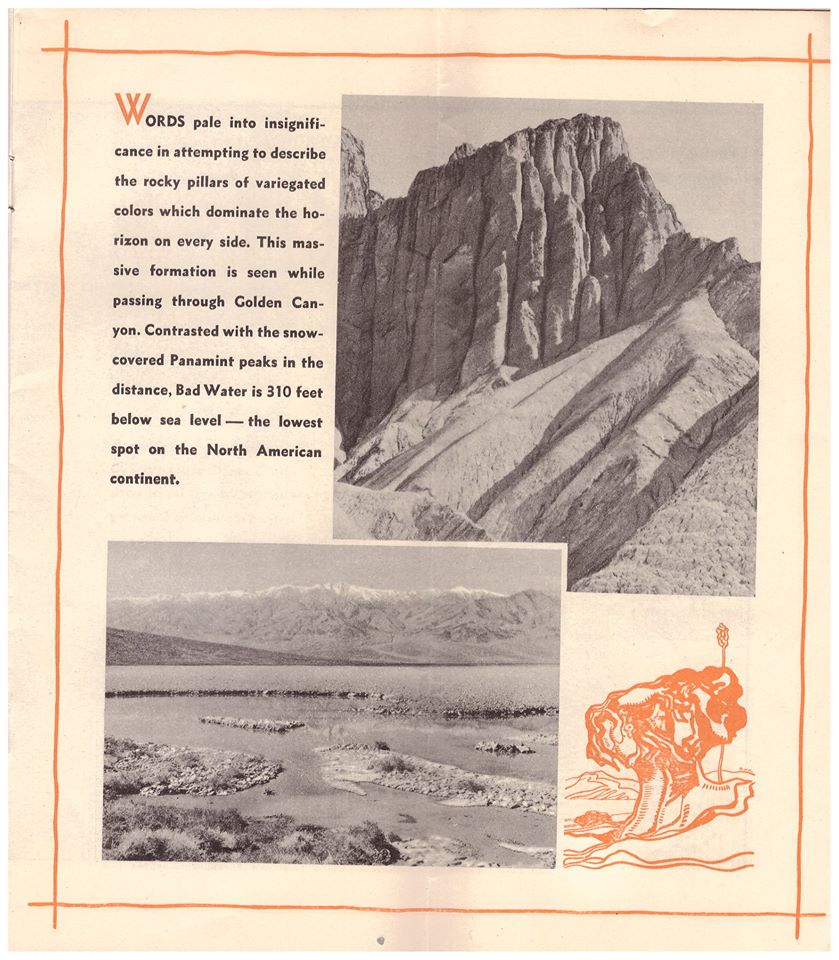
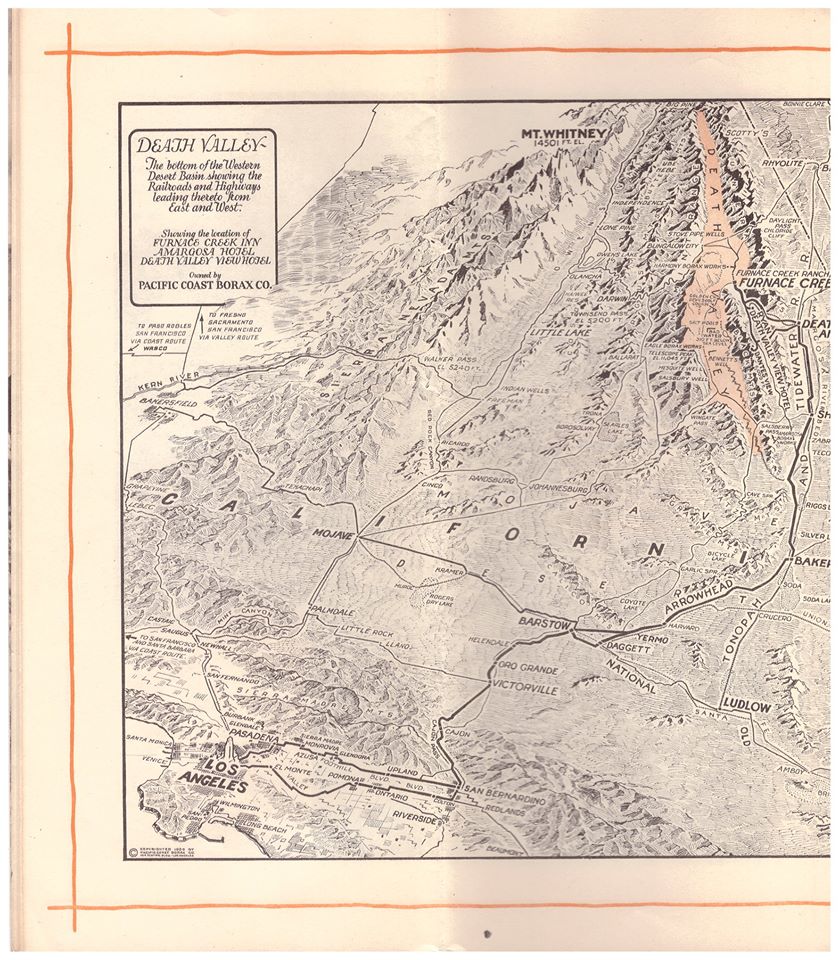
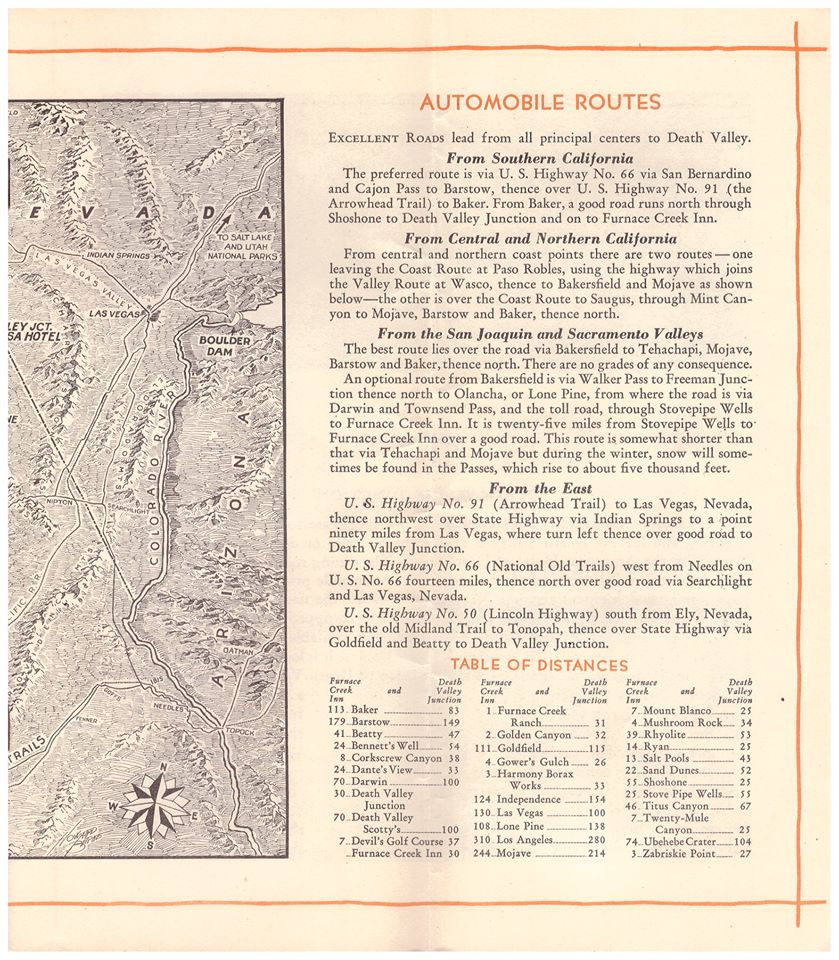

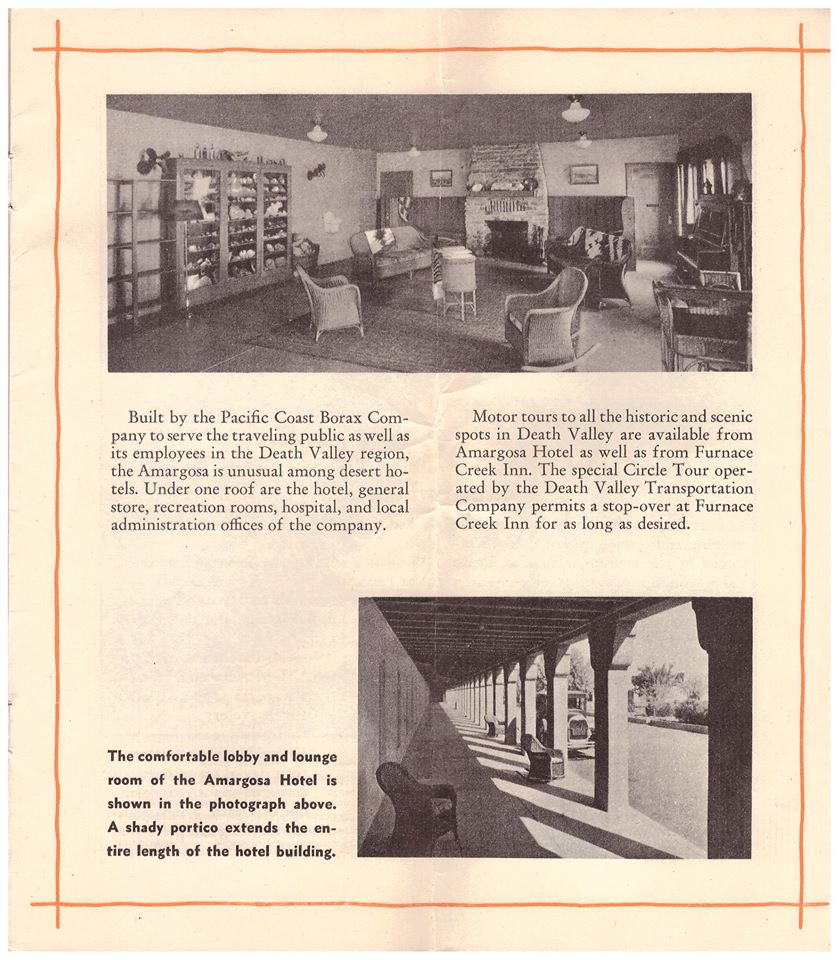
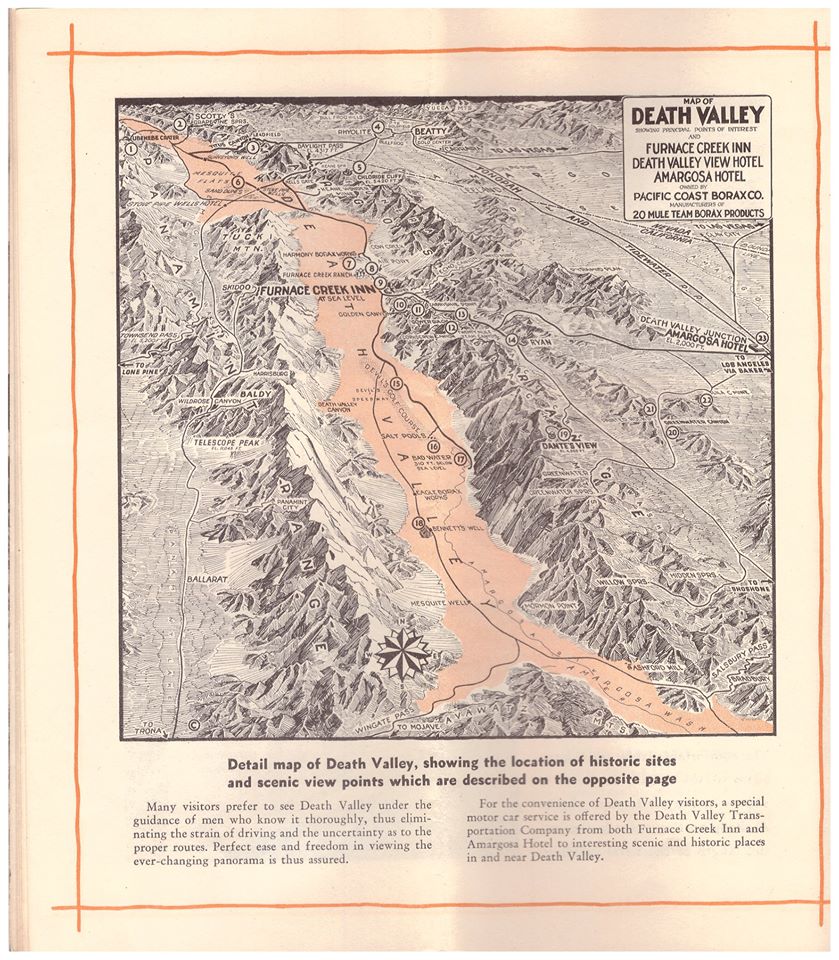
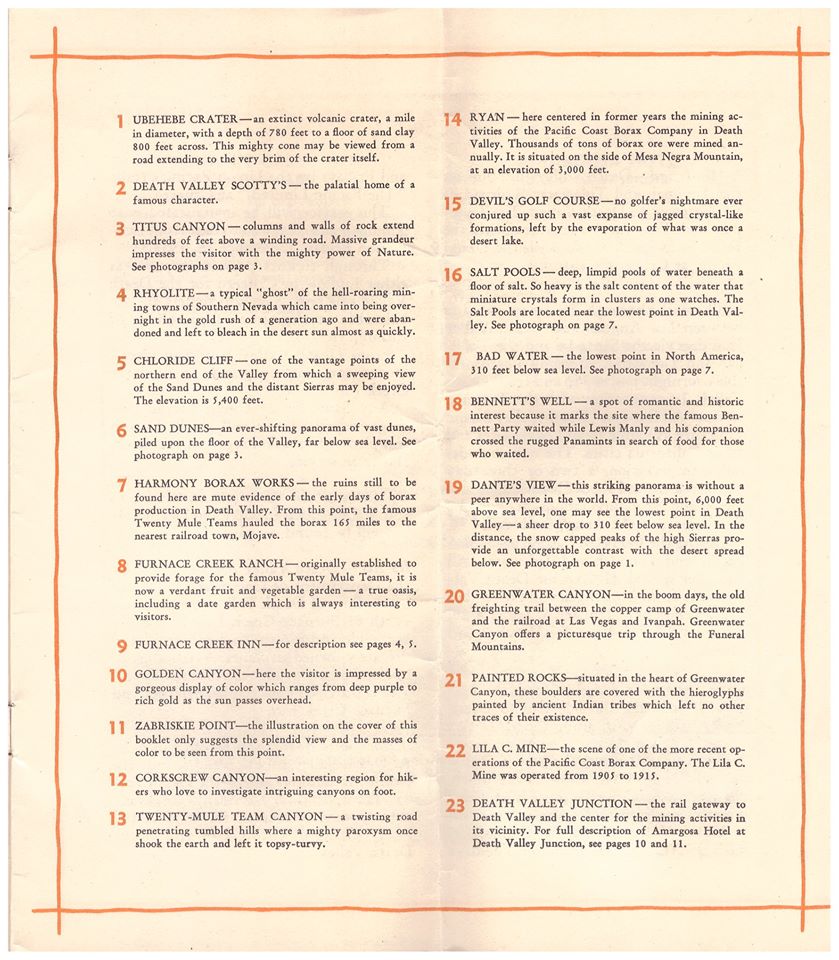
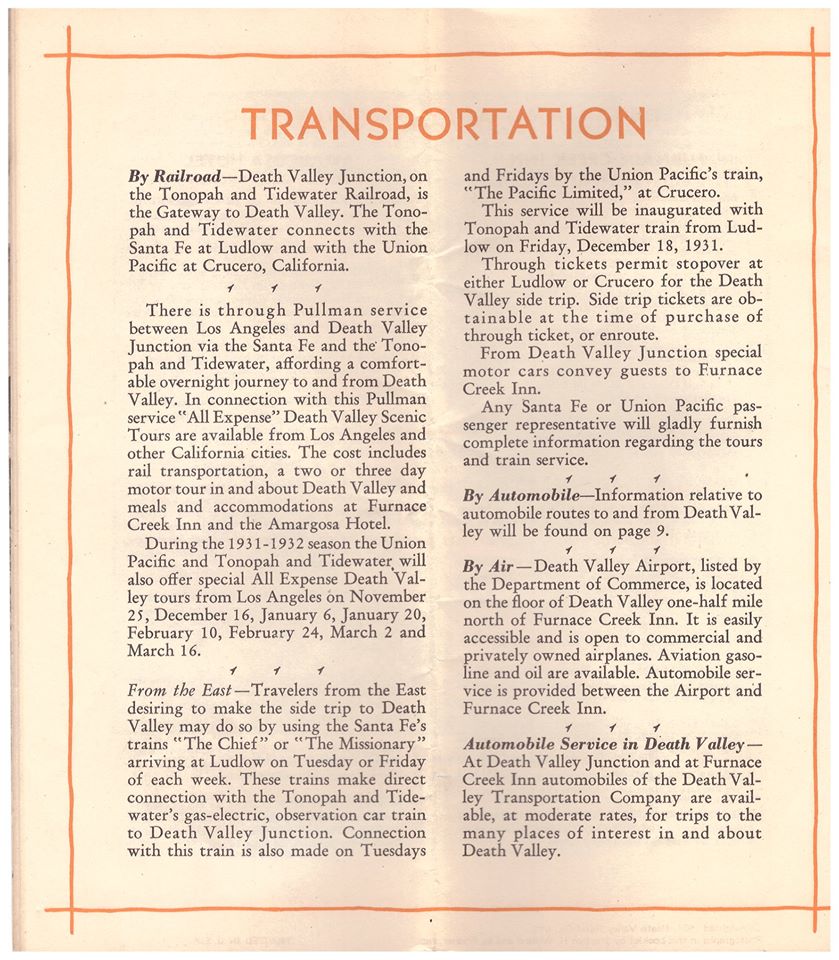
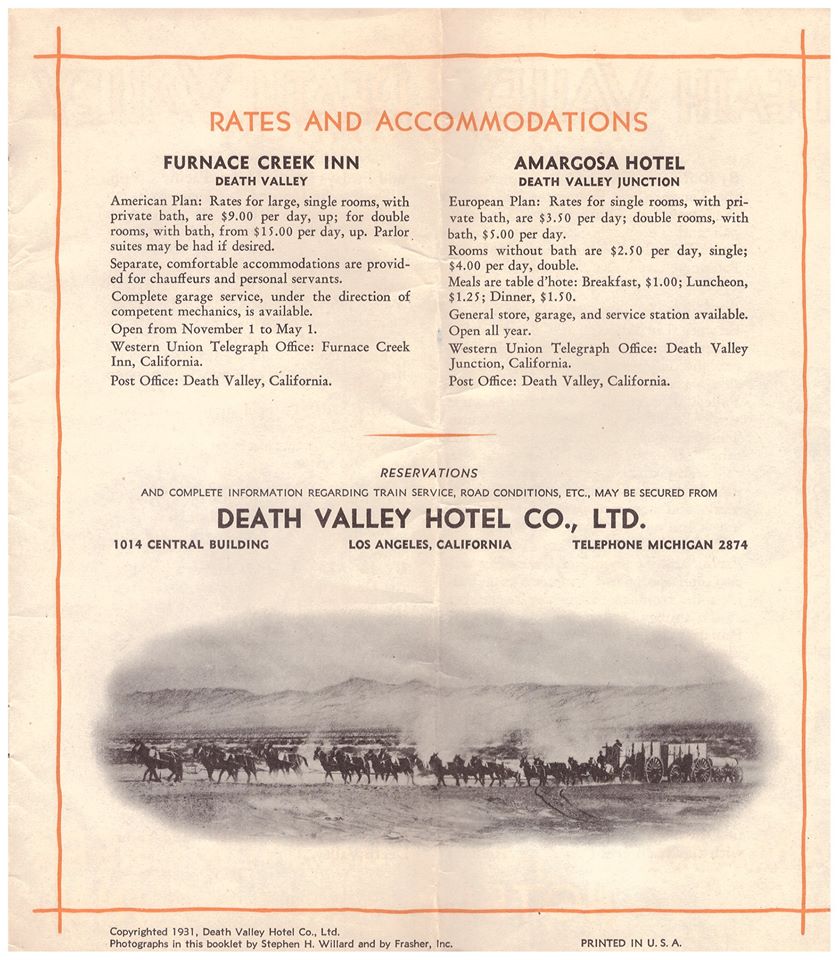
Amargosa River (Sperry Wash)
Death Valley’s Lost ’49ers
Jefferson Hunt’s Mojave San Joaquin Company, a wagon train made up of anxious gold seekers and settlers frustrated by a late start across the desert in late 1849 join with Captain Hunt to be guided across the Mojave Desert along the new southern route. Tensions rise with a wrong venture into the Escalante Desert and at a point east of Enterprise, and north of Mountain Meadows, Utah, anarchy ensues and the train breaks up into two factions; those who will become lost and those who will go on as planned. Of the 107 wagons in this once large party, only seven wagons remain.
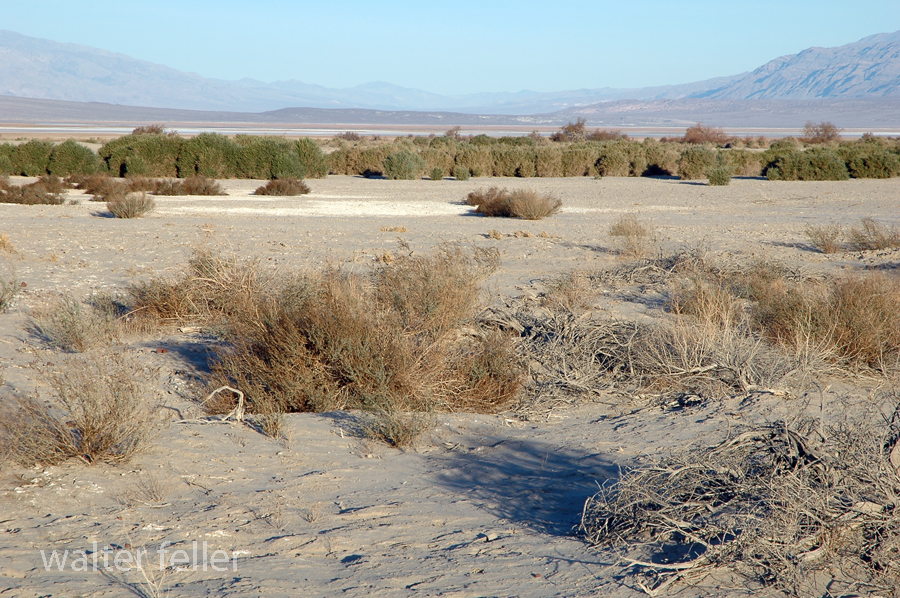
Furnace Creek, Death Valley National Park
On December 22, 1849, the ‘Mojave Sand-walking Company,’ as it became known, arrived in San Bernardino, California. At the same time the remaining ‘Lost ’49ers,’ about one-quarter of those who broke away originally, were entering the desolate Death Valley and would be celebrating Christmas Day near what we know as Furnace Creek.
Death Valley in 1849
Photo Edits/Updates 12/2021

Afton Canyon
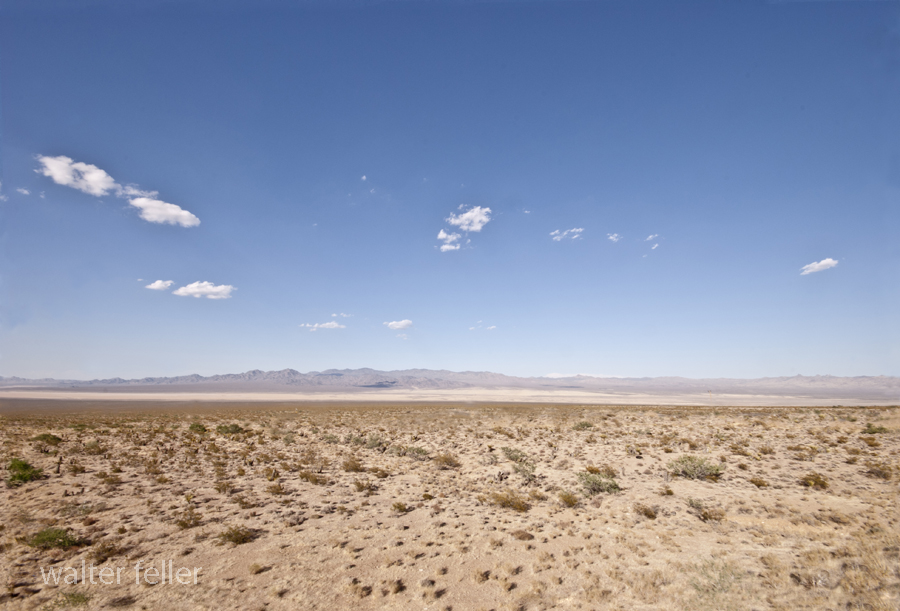
Ivanpah Dry Lake

Red Mountain
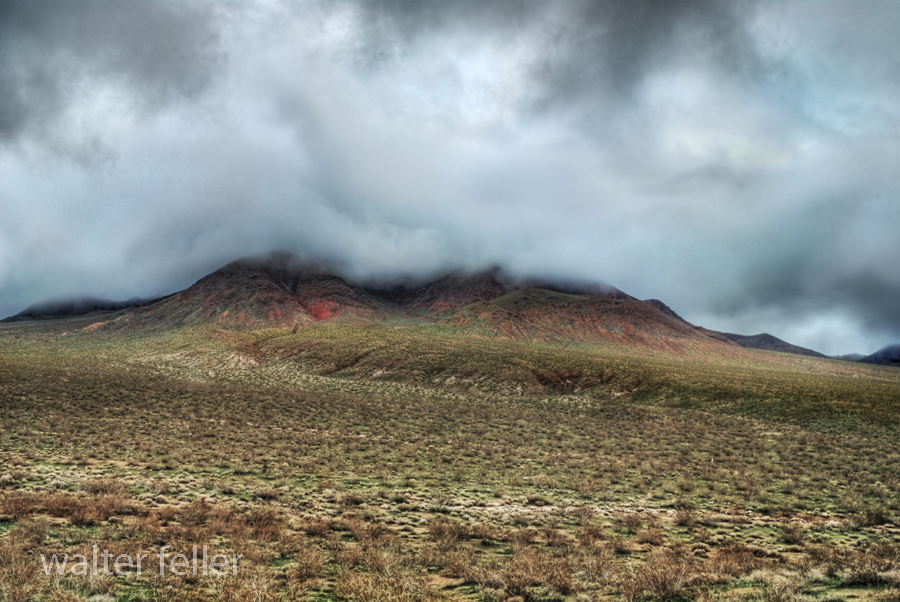
Red Mountain
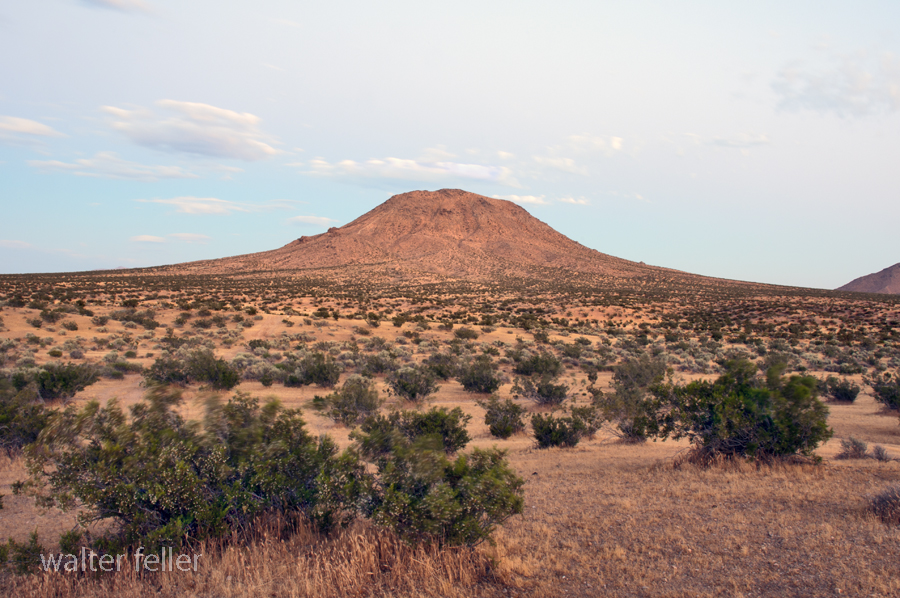
Bell Mountain, Apple Valley, Ca.

Digital-Desert.com/MojaveDesert.Net — Corporate Campus


Inyo Mine, Echo Canyon, Death Valley
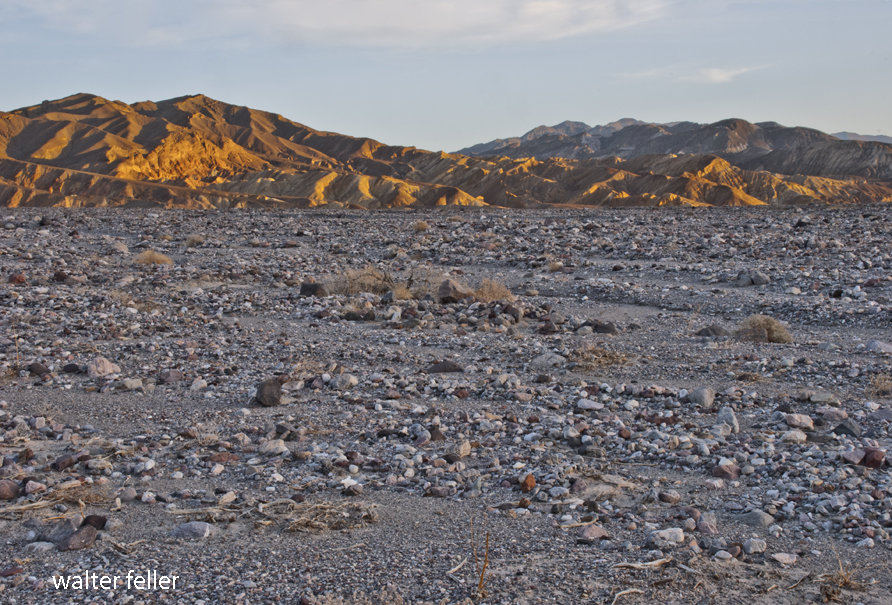
Furnace Creek Wash, Death Valley
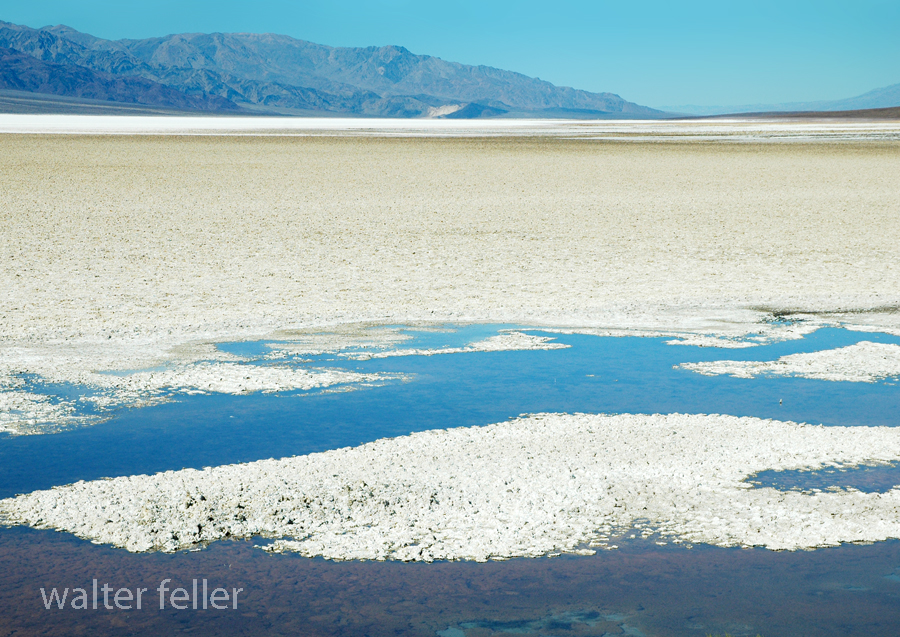
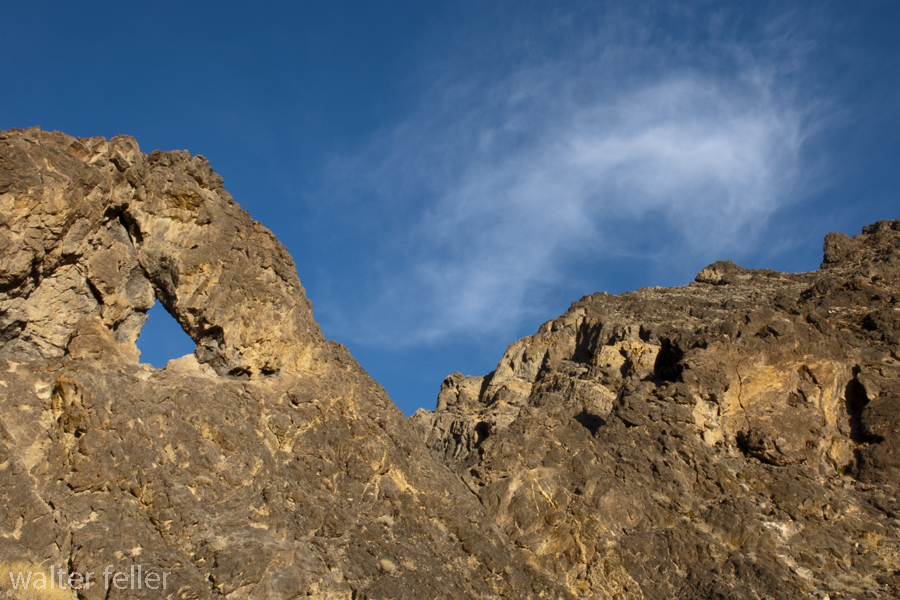
We all need a place to watch the world spin . . .
Needles Eye, Echo Canyon, Death Valley
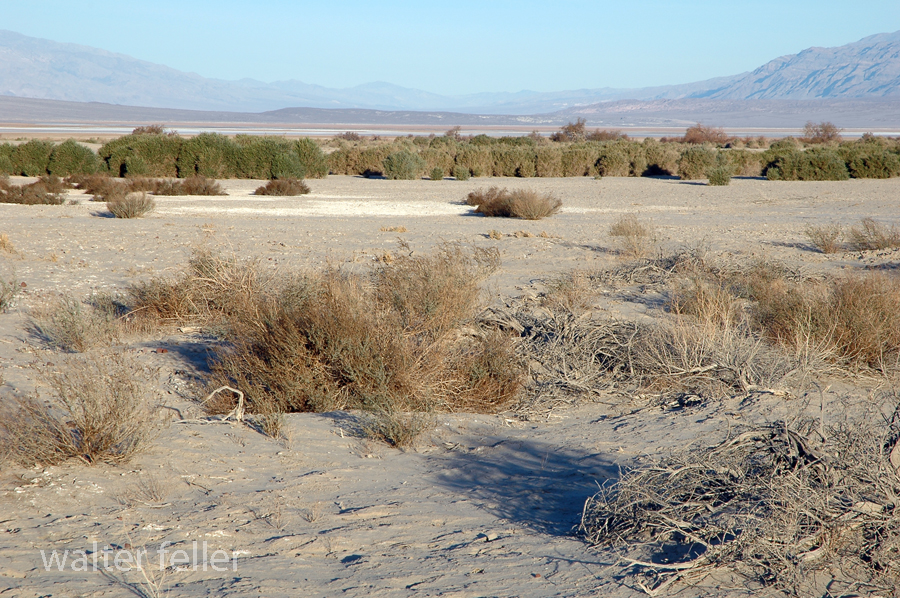
Furnace Creek, Death Valley National Park
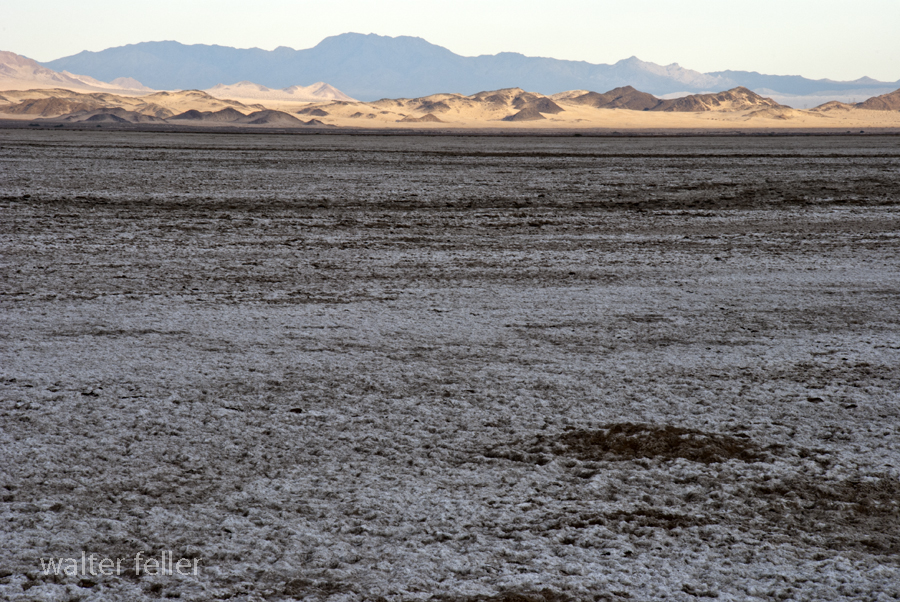
Devil’s Playground, Soda Lake, Mojave National Preserve


Providence Mountains, Mojave National Preserve
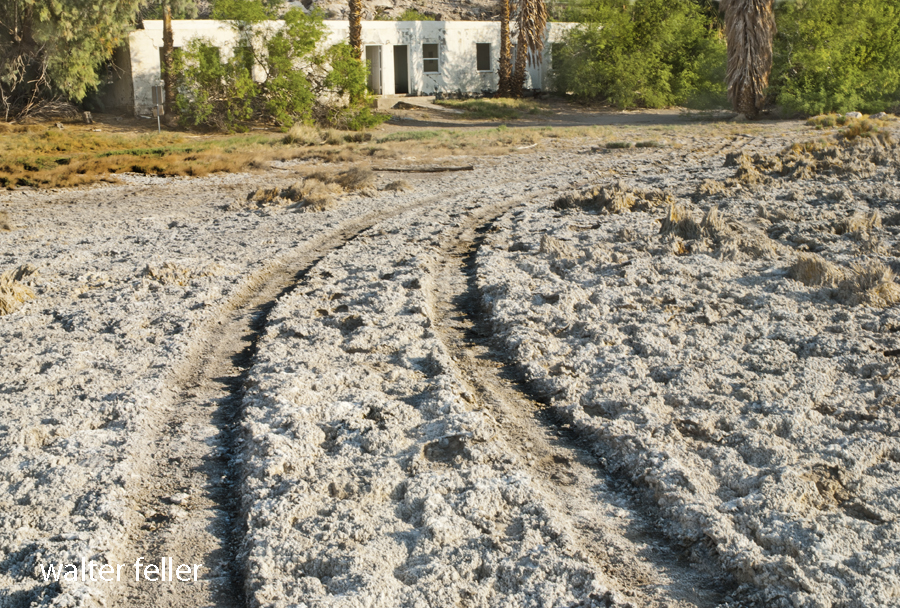
Sunrise Bungalow, Mojave Preserve

Soda Lake, Pacific Coast Soda Company
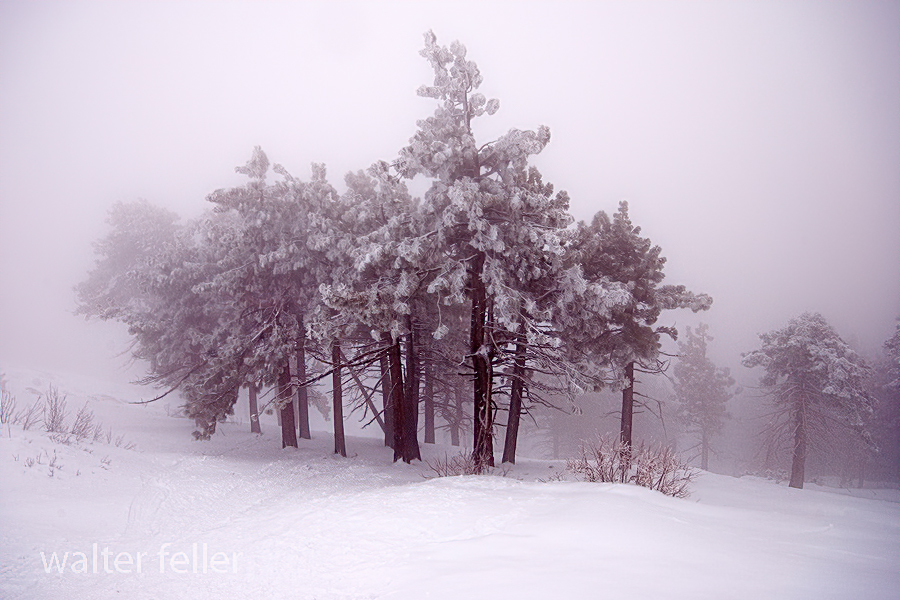
Winterkind, Inspiration Point, San Gabriel National Monument

San Bernardino National Forest – 2/2010

Marl Spring, Mojave National Preserve

Last Chance Spring – 2010
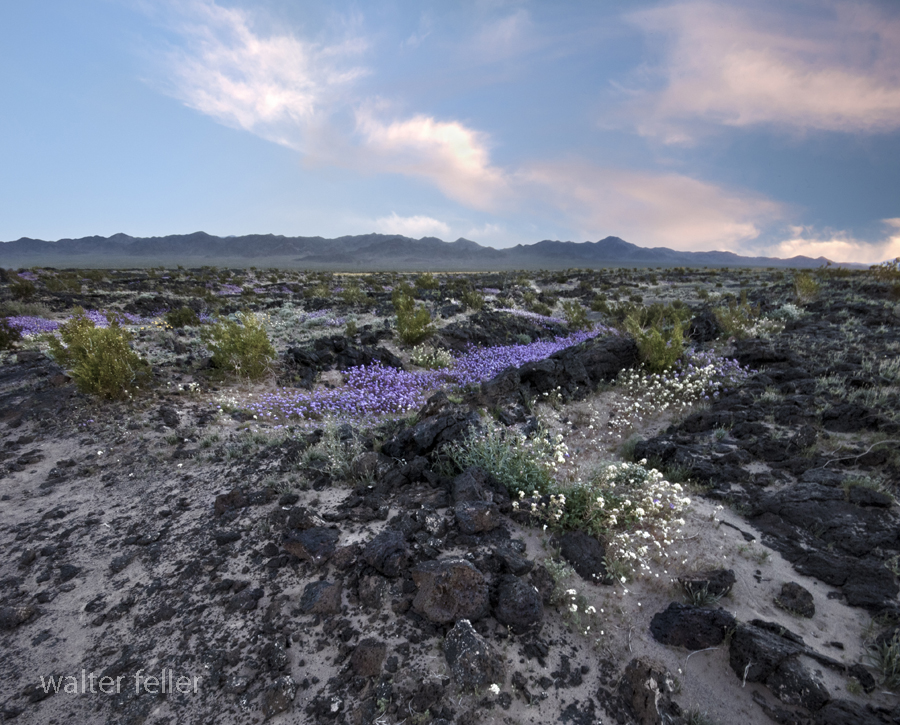
Lava Field, Amboy Crater – 2008
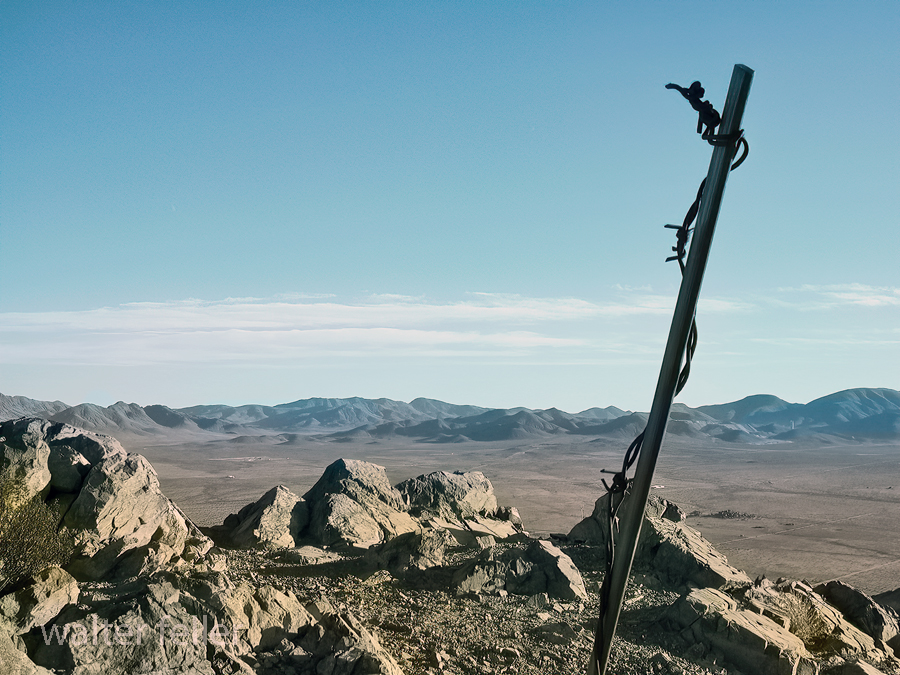
Bell Mountain Summit, Apple Valley, Ca. – 1/2004
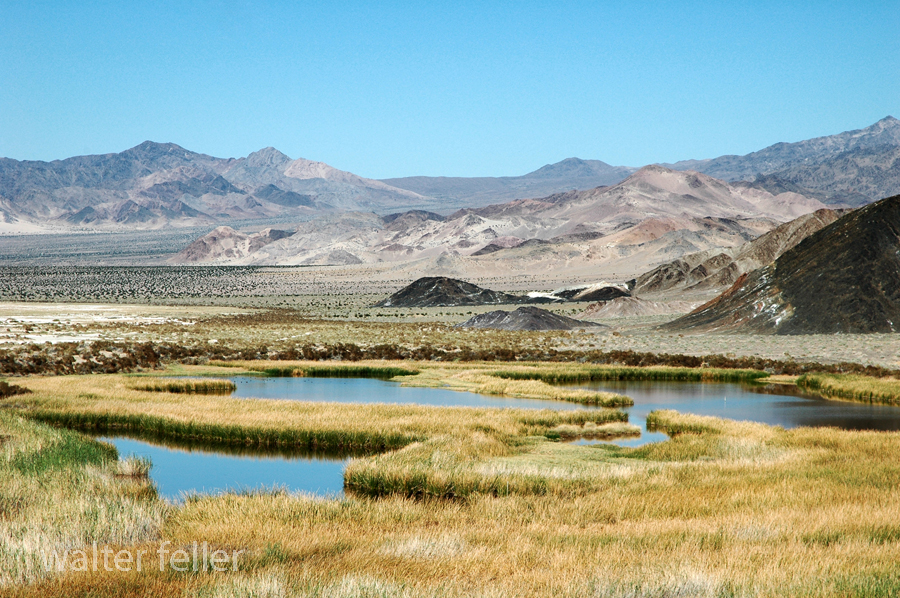
Saratoga Springs, Death Valley National Park
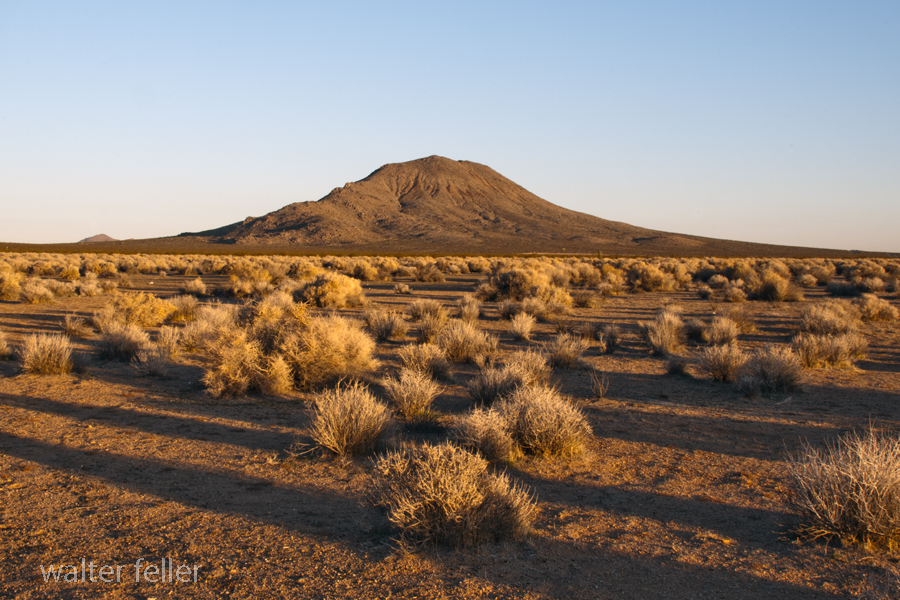
Bell Mountain, Apple Valley, Victor Valley, Ca. – 2011





